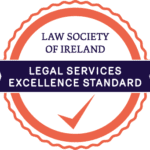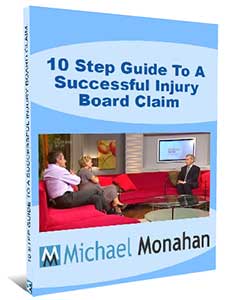‘Personal injury claim’ refer to the legal action initiated by an injured person if they have been involved in an accident and/or have been injured as the result of actions/inactions or negligence of a third party. Such incidents can be broad in scope, ranging from road traffic accidents, to accidents at work, to accidents in public places, or medical negligence.
While most people will be fortunate enough to never need to launch a personal injury claim, it is important to know what the process involves and what you will need to do if you feel that you have grounds for a claim.
Although every case is different, the below steps offer a broad outline of what you should do in the event that you are injured as the result of an injury caused by a third party.
1. Contact a Solicitor
Speak to a solicitor that specialises in personal injury law, as they will be able to tell you whether you have grounds to pursue a compensation claim prior to launching an expensive and timely legal challenge.
2. Inform the Party at Fault
You must notify those responsible for your injury within two months of the incident occurring. While you can still launch a claim after the initial two months, it may work against you if the case goes to court.
3. Gather Your Evidence
The third step is to gather the relevant evidence that will be used to support your claim. This usually involves obtaining medical records and/or getting a medical report that details the extent of your injuries.
4. Submit a claim to the Personal Injuries Assessment Board
Following the collection of your medical evidence, you must then submit your claim to the Personal Injuries Assessment Board (PIAB). The function of the PIAB is to evaluate and assess personal injury claims. All personal injury claims in Ireland (except for cases involving medical negligence) must be submitted to PIAB.
5. Wait for the Party at Fault to Respond
The party at fault, known as the ‘Respondent’, will then be contacted by the PIAB. The PIAB will ask if the Respondent if they are happy for your claim to be assessed. If the Respondent declines, you must go straight to step 7.
6. Wait for the PIAB assessment
If the Respondent has accepted the assessment, the PIAB will take no more than 15 months in the evaluation of your case and to decide the amount of compensation that you should be entitled to. If both you and the Respondent accept the findings and decision of the assessment, you will receive your settlement and the claim will end.
7. Launching Court Proceedings
Should either you or the Respondent reject the findings of the PIAB, authorisation will be issued by the board to launch court proceedings.
8. Initiate Negotiations and Attend a Settlement Meeting
At this stage, your solicitor will gather further evidence in support of your claim, while also contacting the other side in relation to the negotiation of a suitable settlement. This will often involve your legal counsel meeting with the Respondent and/or their legal representatives to reach a viable solution, known as a ‘settlement meeting’.
9. Attend Court
If a settlement agreeable to both sides cannot be reached, the case will then be brought to court where a judge will decide the outcome.
10. Settlement of the Claim
At this stage, there are two outcomes; either both parties will have agreed on a suitable compensation amount, or the judge will determine how much compensation you should receive. Either of these outcomes will finalise the settlement of your claim, and you cannot claim further compensation in the future for the same personal injury.
For further information about any of the points listed above, or if you wish to launch a personal injury claim, contact your solicitor who will work with you to evaluate your options and provide you with a comprehensive assessment of your case.
*In contentious business, a solicitor may not calculate fees or other charges as a percentage or proportion of any award or settlement.*


